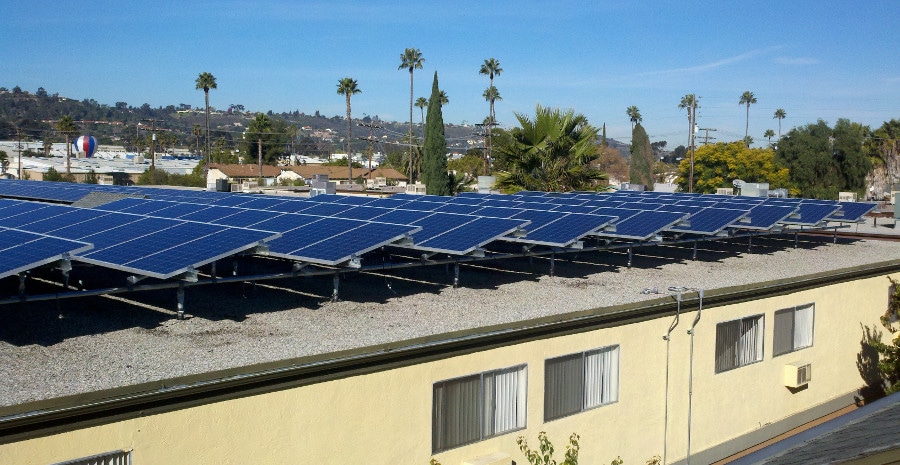All it took was a day. One day, and California’s Solar on Multifamily Affordable Housing (SOMAH) program is nearly fully subscribed.
Of the five utility service territories the program covers, Pacific Gas and Electric Company (PG&E), Southern California Edison Company (SCE) and San Diego Gas & Electric Company (SDG&E) have all had this year’s funding exhausted. Only PacifiCorp and Liberty Utilities Company’s areas have funding left available. PG&E and SCE are still accepting applications to be placed on the waitlist for next year, while SDG&E’s waitlist will close on August 19 to ensure next year’s funding and to avoid an overly backed-up waitlist.
The subscriber stampede, 240 applications in total, represents 75 MW of solar generation capacity and $163 million in funding. Those 75 MW also account for 25% of the program’s entire planned capacity of 300 MW. It’s a 10 year program, so hitting the 25% capacity mark in its first year is particularly significant.
“We’re pleased that the demand for SOMAH incentives that we’ve been hearing from property owners and solar contractors has materialized into so many applications,” said SOMAH’s program manager, Jae Berg. “The applications we’ve received tend to represent large-scale projects and the solar allocation for tenant areas is at nearly 90%. We interpret this as the program doing exactly what we planned—converting the energy consumption of a significant number of low-income tenants to solar power and enabling them to benefit from renewable energy and lower utility costs.”
SOMAH is the final result of Assembly Bill 693, which passed in 2015. Under SOMAH, apartment units that house low-income families can apply to have subsidized solar generation units installed. The owners and tenants of those units are then awarded credits through a virtual net metering system, a subprogram of the state’s “Net Metering 2.0” program. The state’s utilities have been directed to set virtual net metering tariffs for SOMAH, and least 51% of the electricity generated by the qualifying systems must be dedicated to tenants.
Outside of the virtual net metering, program participants also qualify for incentives set at a base rate of $3.20 per watt for the portion of PV systems serving tenants and $1.10 per watt for the portion serving common areas. This base rate is discounted for projects that also claim the federal Investment Tax Credit or the Low Income Housing Tax Credit.
These early adopters will also get the most out of the program, as incentive levels will be reduced annually starting July 1, 2020. The annual reduction will be by either 5% or based on a cost analysis by the U.S. Department of Energy’s National Renewable Energy Laboratory, whichever is less. However this is where the previously-mentioned waitlists come into play, as waitlisted applicants will be considered for funding in the order they are received and may be eligible for the first year’s incentive rates once the next cycle of funding is appropriated, which is anticipated to begin at the start of 2020.
This content is protected by copyright and may not be reused. If you want to cooperate with us and would like to reuse some of our content, please contact: editors@pv-magazine.com.









By submitting this form you agree to pv magazine using your data for the purposes of publishing your comment.
Your personal data will only be disclosed or otherwise transmitted to third parties for the purposes of spam filtering or if this is necessary for technical maintenance of the website. Any other transfer to third parties will not take place unless this is justified on the basis of applicable data protection regulations or if pv magazine is legally obliged to do so.
You may revoke this consent at any time with effect for the future, in which case your personal data will be deleted immediately. Otherwise, your data will be deleted if pv magazine has processed your request or the purpose of data storage is fulfilled.
Further information on data privacy can be found in our Data Protection Policy.